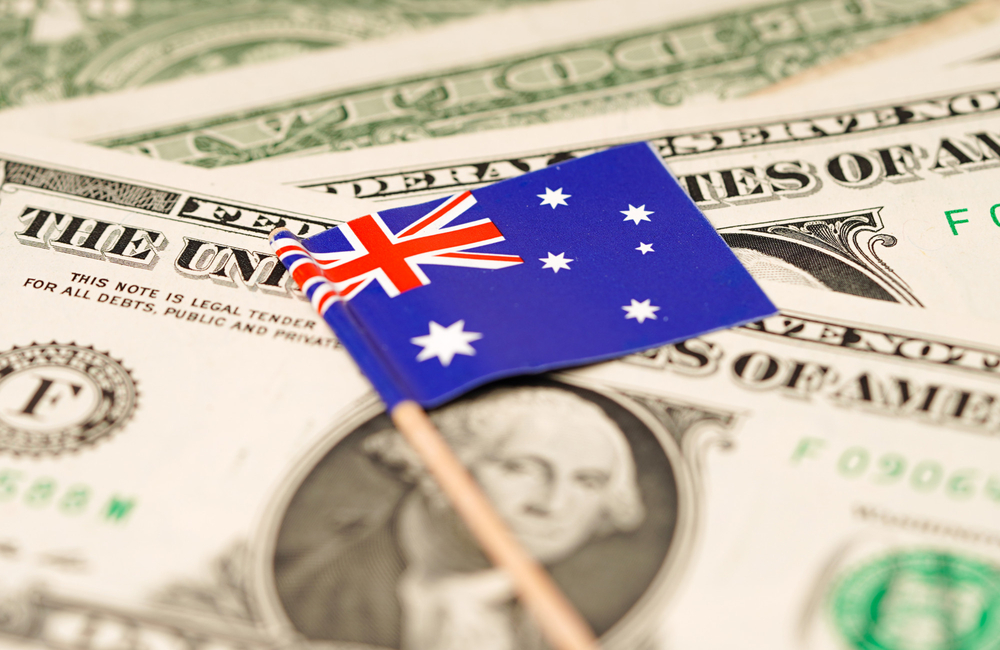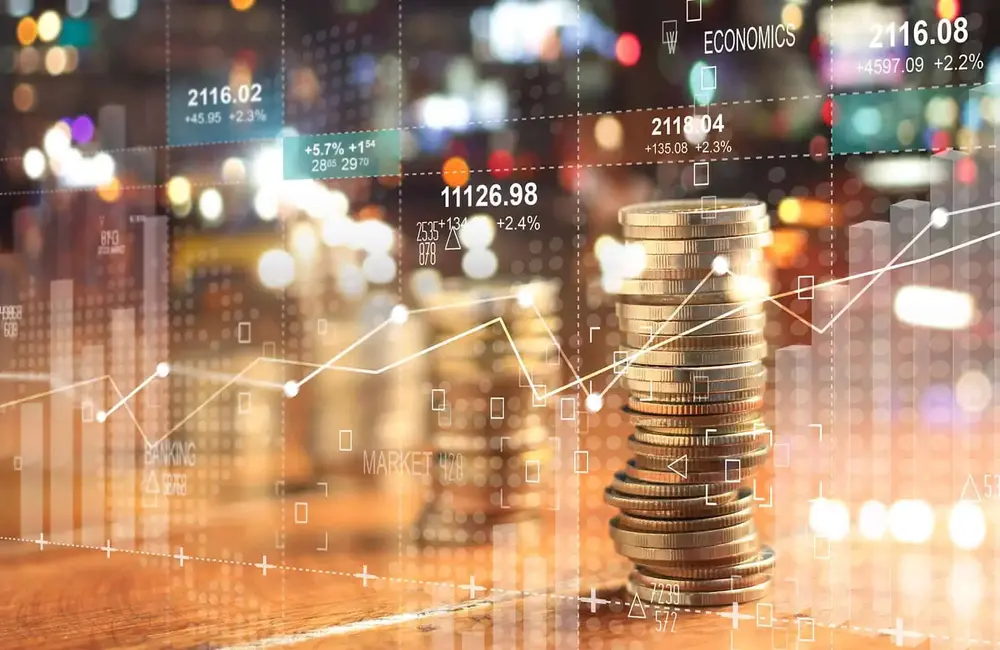ASX futures 10 points or 0.13% to 7251 at 77:00 AEST on Tuesday, indicating a small gain at the open.
US stocks fell on Monday as large protests across China against the country’s zero-Covid policy stoked fears among investors about the prospects for the world’s No. 2 economy and the global growth backdrop.
The S&P 500 was down 1.50 percent in afternoon trading and the Dow Jones Industrial Average lost 1.41 percent, or 360 points. The Nasdaq Composite also fell, by 1.58%.
Stocks opened in the red. But the sell-off gained speed in the afternoon following comments from Federal Reserve officials suggesting that interest rates could remain higher for longer with inflationary pressure continuing to build. “There is still more work to do” to cool prices, New York Fed President John Williams said on Monday. Federal Reserve Bank of St. Louis President James Bullard spoke Monday, too, about higher rates going forward.
“Following those Fed comments that were more hawkish than expected, it’s definitely not a surprise that we’re seeing this much more red than we did earlier,” said Greg Bassuk, the chief executive of AXS Investments.
Investors are awaiting the Labor Department’s jobs report for November due out Friday, which will probably have an outsize impact on the Fed’s interest-rate policy decision to be made in December.
The US stock market has staged a strong recovery in the last few weeks on hopes that the Federal Reserve will soon slow its pace of interest-rate increases, but the comments on Monday and the weekend demonstrations in several Chinese cities raise new potential for volatility.
China’s economy is fragile enough already, and the protests have called into question what course it takes from here. Strategists and investors say they are weighing the risk that the protests will lead to more aggressive lockdowns, further battering the economy.
COMMODITIES - In commodity markets, Brent crude tumbled 0.32% to US$83.36 a barrel, gold dropped 0.82% to US$1,740.60.
In fixed-income markets, Australian 2 Year government bond yields fell to 3.12% and 10 Year yields to 3.51%. The yield on the benchmark 2 Year US Treasury notes rose to 4.46% offshore, while the yield on the 10 Year US Treasury notes dropped to 3.70%.
The Australian dollar was worth 66.48 US cents, down from the 67.48 US cents at the last close. The Wall Street Journal Dollar Index, which measures the U.S. currency against 16 others, slipped to 99.39.
Asia
Chinese shares ended the day down, dragged by financial and energy companies, gloom over record Covid-19 infections and spreading protests against strict pandemic rules. China Merchants Bank and Ping An Insurance fell more than 3 percent, while Cnooc and PetroChina both lost more than 1 percent. WuXi AppTec fell 7.2 percent after its controlling shareholder said it was planning to sell some shares. But airlines were exceptions to the downside, with Air China, China Southern Airlines and China Eastern Airlines up by 1.4%-2.8%. The Shanghai Composite Index was down 0.7% to 3078.55, the Shenzhen Composite Index was off 0.5% and the ChiNext Price Index retreated 0.5%.
The Hang Seng Index in Hong Kong was down 4.0 percent to 16,874.57 on reports of protests in China over its strict zero-Covid policy, while the Nikkei 225 in Japan had slipped 1.4 percent to 25,877.16. “Mass rallies would massively tilt the scale for an even softer economy and it is hard to imagine it without bringing a flood of Covid cases and that is a huge headache for policymakers,” Stephen Innes, managing partner at SPI Asset Management, writes in a note. Country Garden Services is among decliners with an 8.7% drop, JD.com, which is down 7.0% and Li Ning, which is lower by 5.1%. Among the decliners, though, are casino stocks, such as one that is higher after the Macau government granted all six licensed casino operators license extension. Sector gainers were led by Wynn Macau, which is up 12%.
In Japan, The Nikkei Stock Average fell 0.4% to 28162.83, in step with broad losses across the region on concerns that protests would spread to China’s major cities. Stocks of consumer companies with China as one of their key markets dropped. Kose and Shiseido each fell 0.5%, 1.2% a baby products maker Pigeon declined 1.5%. Non-ferrous metal stock Nippon Steel fell 3.6% and Kobe Steel slid 3.0%. Political developments could also be in the spotlight after a Nikkei poll on Sunday showed public support for the Cabinet of Prime Minister Fumio Kishida slid to a record low.
Europe
European stocks ended lower on the day, weighed down by worries of protests in China related to that country’s tight Covid-19 restrictions. The pan-European Stoxx Europe 600 fell 0.7 percent and the German DAX fell 1.1 percent while the French CAC 40 fell 0.7 percent.
“European and US markets are following their Asian counterparts lower today, with weekend unrest in China adding to the Covid-infused uncertainty that had been building over the past couple of weeks,” the analyst at IG, Joshua Mahony, writes. It is unclear how China's protests will end – with fears of a protracted period of restrictions amid a surge in Covid cases sounding a note of caution, he adds.
The FTSE 100 index declined 0.17% to 7474 as protests in China against Covid-19-related restrictions left a selloff in global markets. “As the rest of the world is moving on in terms of learning how to manage life with Covid, China appears to be persistent with a containment strategy that without a vaccine program is unlikely to succeed,” says CMC Markets chief market analyst Michael Hewson in a note. Among the steepest fallers, insurer Admiral Group fell 4.4% and Persimmon fell 3.7% after a rating downgrade by UBS. Oil-related stocks were also lower as commodity prices fell, with BP and Shell falling 1% and 0.3%.
North America
US stocks slid on Monday after demonstrations across China against the country’s zero-Covid policy raised concerns among investors that the world’s second-biggest economy and global growth would take a hit.
The S&P 500 was down 1.50 percent in afternoon trading, and the Dow Jones Industrial Average was down 1.41 percent, or 360 points. The Nasdaq Composite also fell 1.58 percent.
Stocks opened in the red. But the sell-off kicked into higher gear in the afternoon following comments from Federal Reserve officials suggesting they could leave interest rates higher for longer as inflation continues bubbling up. “There’s more work to do to achieve maximum employment, but the labor market is in a very different place than it was a year ago,” the New York Fed president, John Williams, said Monday, adding, “There is still more work to do to get inflation to the right place.” Those rates would also be elevated in the future, St. Louis Fed President James Bullard said on Monday.
“After those comments from the Fed that were more hawkish than many have expected, there’s no surprise that we’re seeing even more red than we were earlier,” said Greg Bassuk, chief executive of AXS Investments.
Investors are looking for Friday’s release of the Labor Department’s November jobs data to potentially shape the Fed’s thinking as it moves toward a December interest-rate decision.
The stock market in the United States had taken off on a blistering rally in recent weeks on optimism that the Fed will soon pause in its interest-rate increases, but the comments on Monday and the weekend protests in several Chinese cities threaten to bring new volatility to the market.
The protests are the last thing that China’s economy, already teetering on the brink, needs now, or at any point. Strategists and investors say they are weighing the risk that the protests could lead to tougher lockdowns, which they said may damage the economy even more.
For both their scale and their rarity, public expressions of anger are rare in China, and to have protests in multiple cities is particularly notable. The demonstrations have been noteworthy.
I don’t think anyone will want to look as though they are backing down because of protests,” said Susannah Streeter, senior investment and markets analyst at Hargreaves Lansdown. “If you continue to have rolling lockdowns, consumer demand will be undermined, and there will continue to be an impact on supply chains. …and a potential decline in demand for critical commodities.
Prices of oil declined, as Brent crude was 0.3 percent lower at $83.41 a barrel, set for a fourth consecutive loss and its lowest settlement since January. It dropped as low as $80.61 a barrel earlier in the session.
Energy firms declined with oil prices. Diamondback Energy slid 3.5 percent, Occidental Petroleum lost 2.1 percent and Exxon Mobil fell 2.5 percent.
The oil market “has corrected on the notion that it’s not going to be an all-out reopening with demand skyrocketing in China,” said Yung-Yu Ma, chief investment strategist at BMO Wealth Management.
But the rebound in oil from its intraday lows Monday is “reflective of the reality setting in now that China’s still going to be on a gradual reopening trajectory,” he said. “That should settle the markets here now that the expectations have reset for what that reopening process looks like.”
Market participants are trying to figure out how to measure the impact of the disturbances in China on growth in other economies, on which there are already indications of slowing growth, like in Europe and the US.
In another indication of the far-reaching effects of China, Apple may end up with a production shortfall of nearly 6 million of its iPhone Pro devices this year because of the disruption at the Chinese factory in Zhengzhou where the vast majority of the world’s latest iPhone models are made, Bloomberg News reported. Apple shares were down about 3 percent.
























